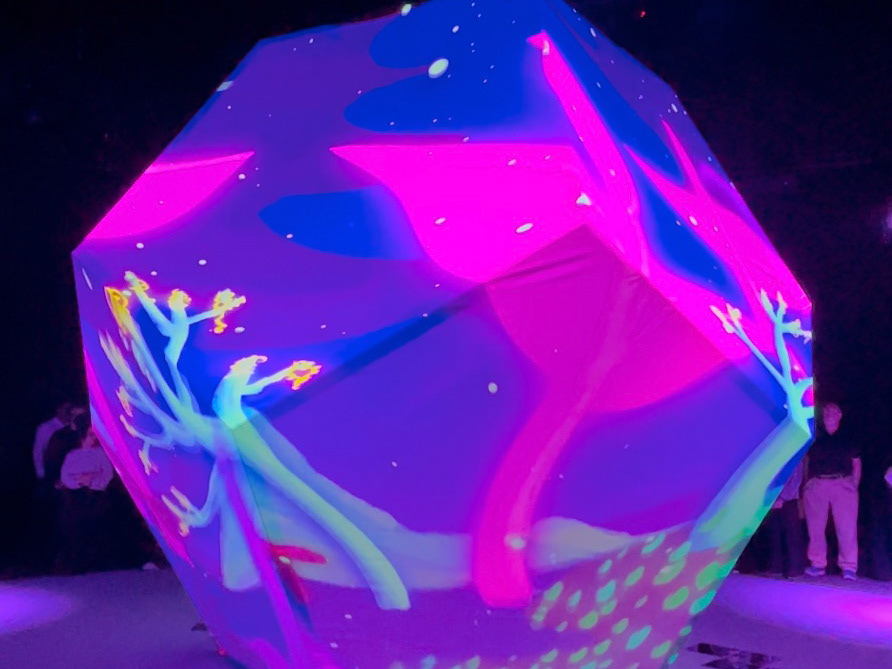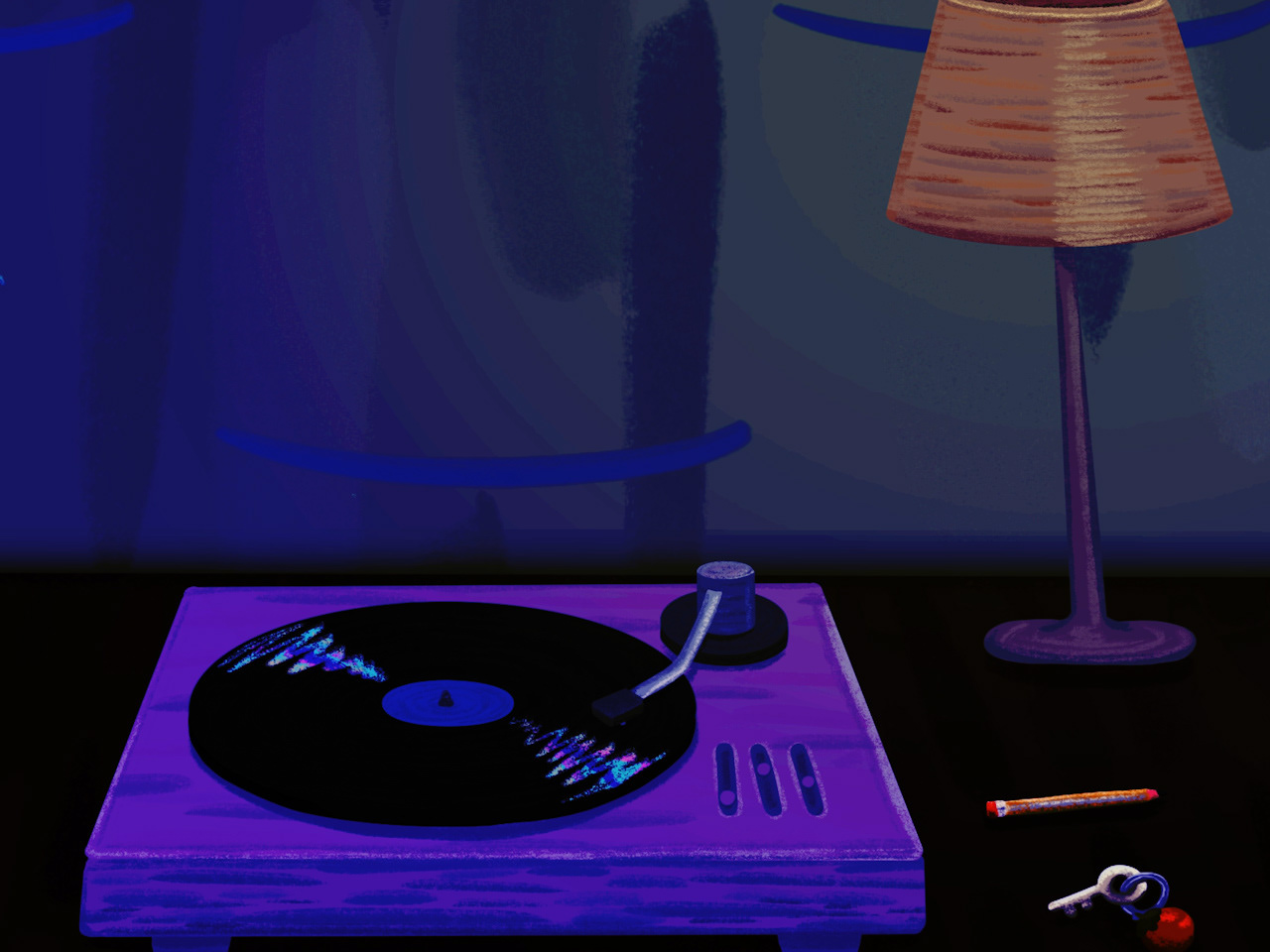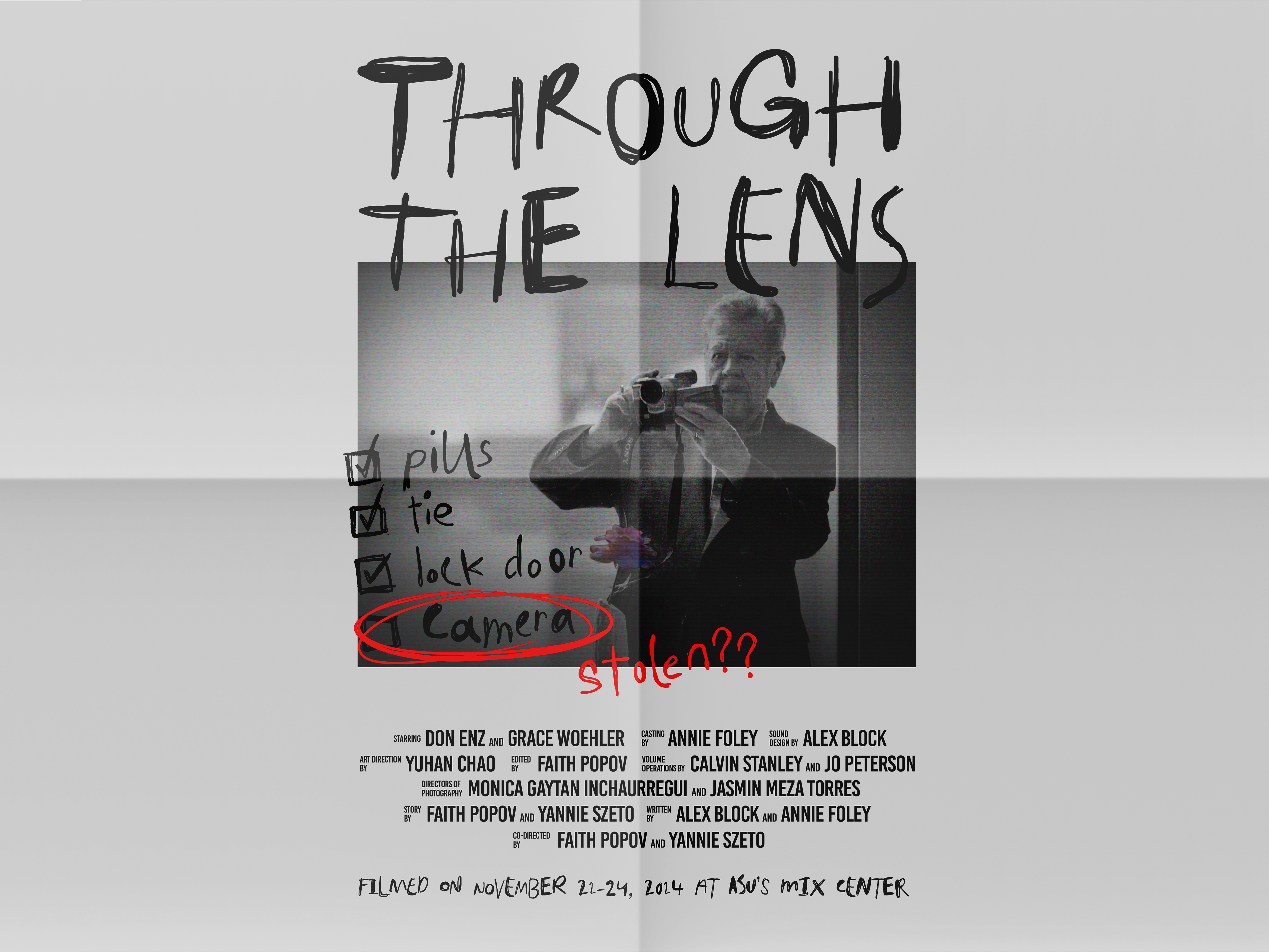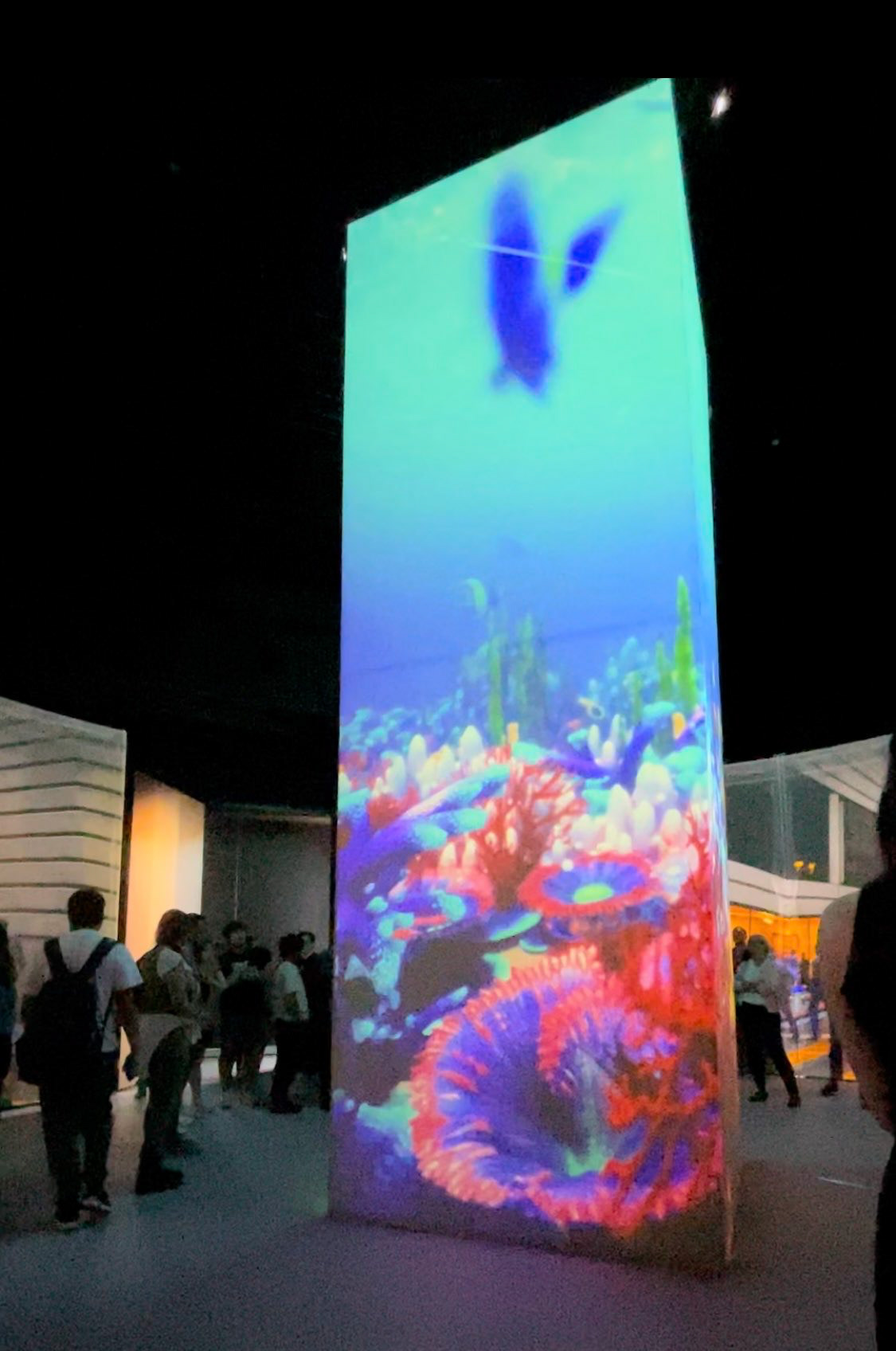
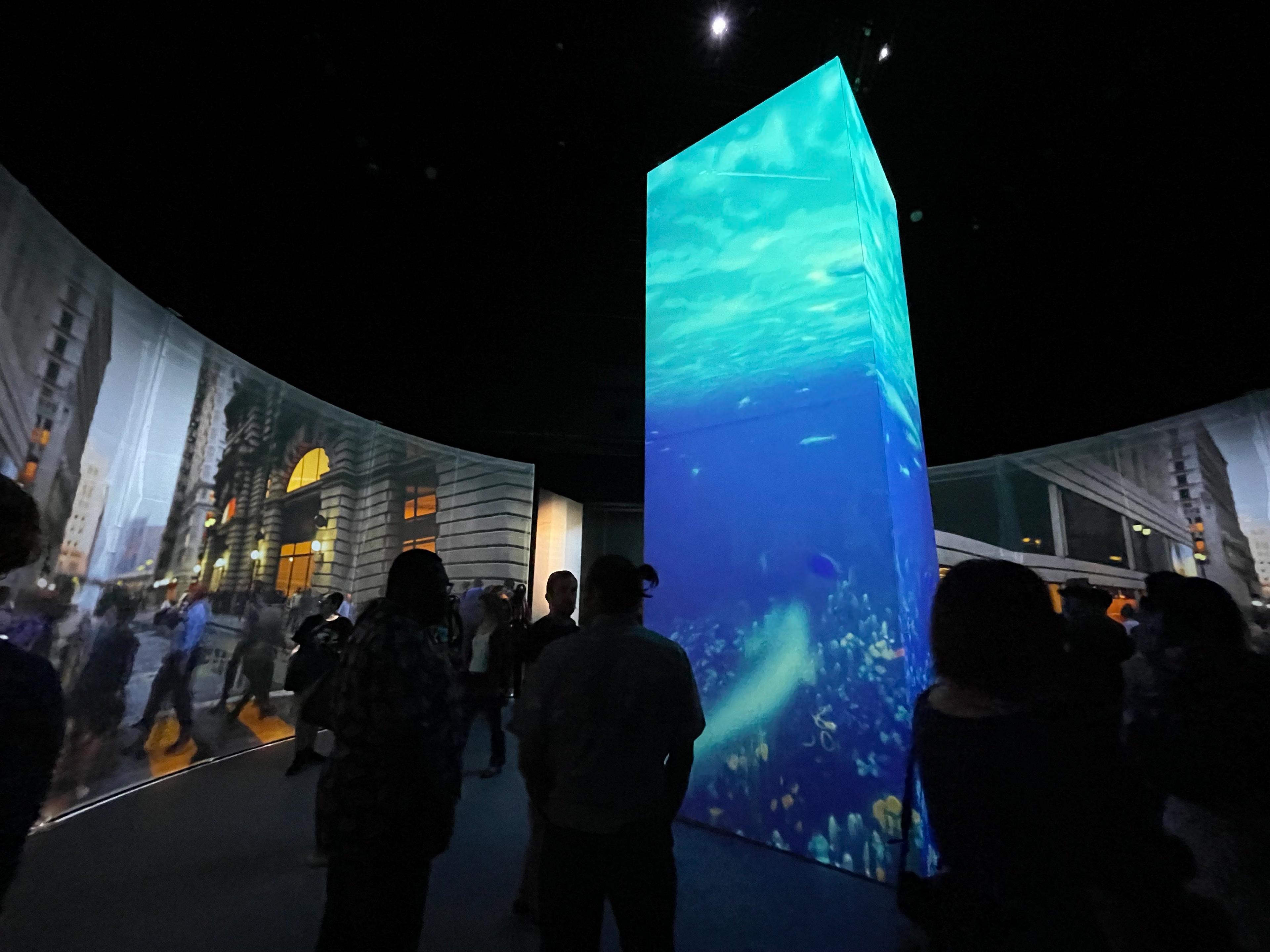
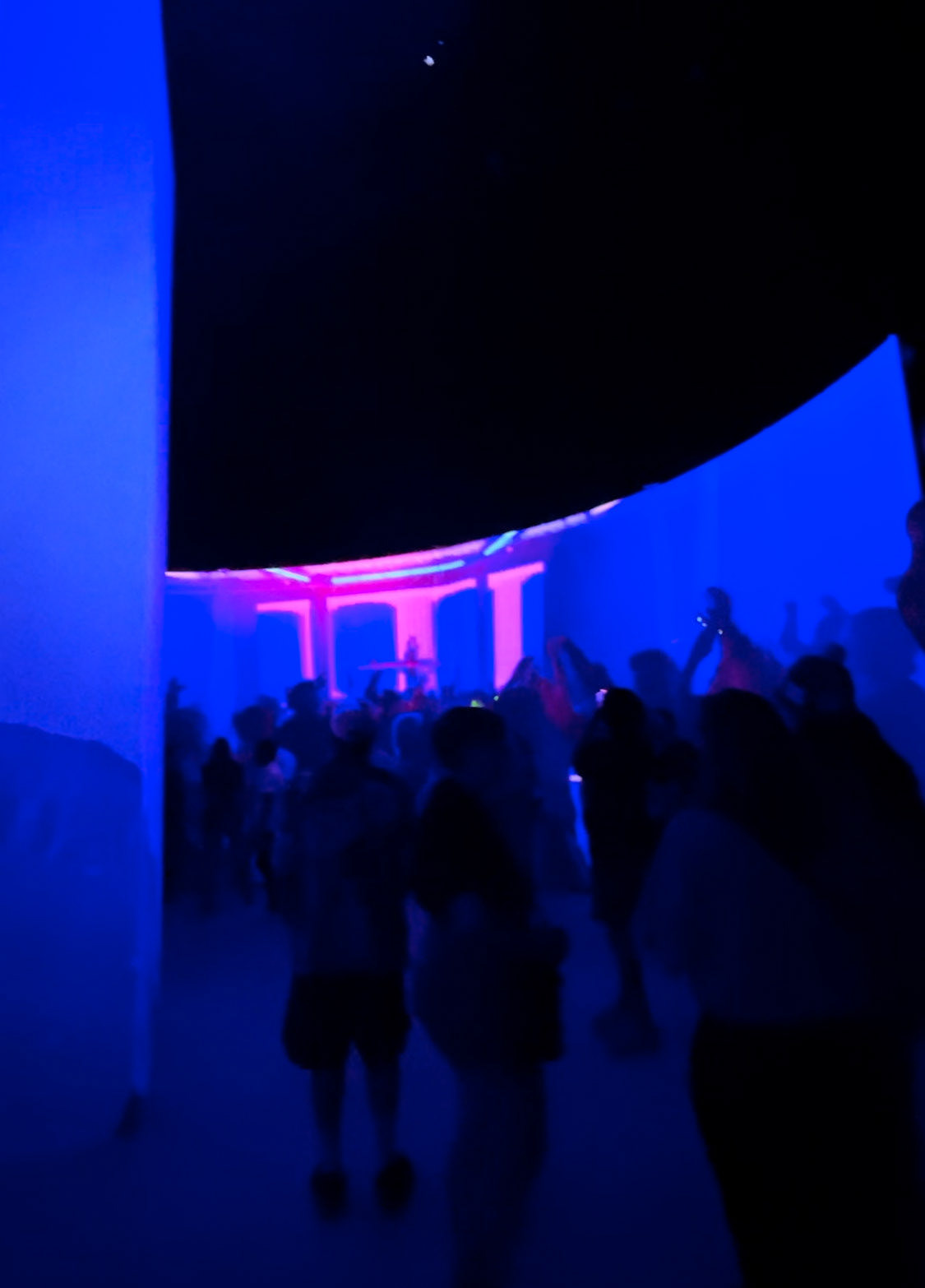
The 52Hz is a 360-degree immersive experience that investigates the genre as a safe place for audiences to acknowledge loneliness and connection. It was showcased at the Enhanced Immersion Studio of Media and Immersive eXperience (MIX) Center in Mesa, Arizona in May 2024.
Professor: Sven Ortel
Team members: Yan Rong, Yannie Szeto, Julien Purvis, Pranshi Jindal, Tessa Bussum, Micheal Shaughnessy
Concept
The idea was inspired from the 52 Hz whale, which is often refer to as the loneliest whale in the world due to its special vocalization frequency. Our team wanted to create the feeling where people find themselves feeling lonely even in crowded and busy places by having two contrasting elements shown on the specially built 360 degree installation. We projected an underwater environment on the center pillar and had some city scenes and night club scenes projected on the surrounding curved screens.
Flow and Architecture
The concept for our screen layout is two shapes one placed in the center of the other. The idea is to create a space of community and a space of solitude.
The audience will enter through the smallest entrance into the larger more communal space. They will wander slowly around the center of the space. They will enter this center volume in smaller groups ideally each person will be in this space alone, however it is likely they will enter in groups of two or three. Finally they will exit the center volume and wander towards the rear Elephant door exit. Passing through these doors will return them to society, ideally to a social and celebratory atmosphere.
Projection Studies
Our custom-built projection setup featured a central pillar encircled by two large curved screens, designed to create an immersive, panoramic viewing experience. Under the guidance of Professor Sven Ortel, we conducted extensive projection studies using Disguise Mapping Matter, analyzing projector placement, lens selection, and coverage optimization to ensure uniform brightness and minimal distortion across the curved surfaces.
I tested different angles and distances in Mapping Matter with the goal to optimize projection quality. Through trial and error, I observed firsthand how steep projection angles create pixel distortions, resolution loss, and uneven coverage. To address these challenges, our team experimented with adjusting projector positions, testing more direct projection paths from greater distances to the sidewalls and Professor Sven Ortel finalized the placement as the screenshot below.
Professor Sven Ortel also showed us different blending techniques to seamlessly merge projected visuals across multiple projectors. This process allowed us to refine the projection design, optimizing it for both visual clarity and immersive spatial integration within the installation.

Projection angles are too steep, creating pixel distortions and resolution loss
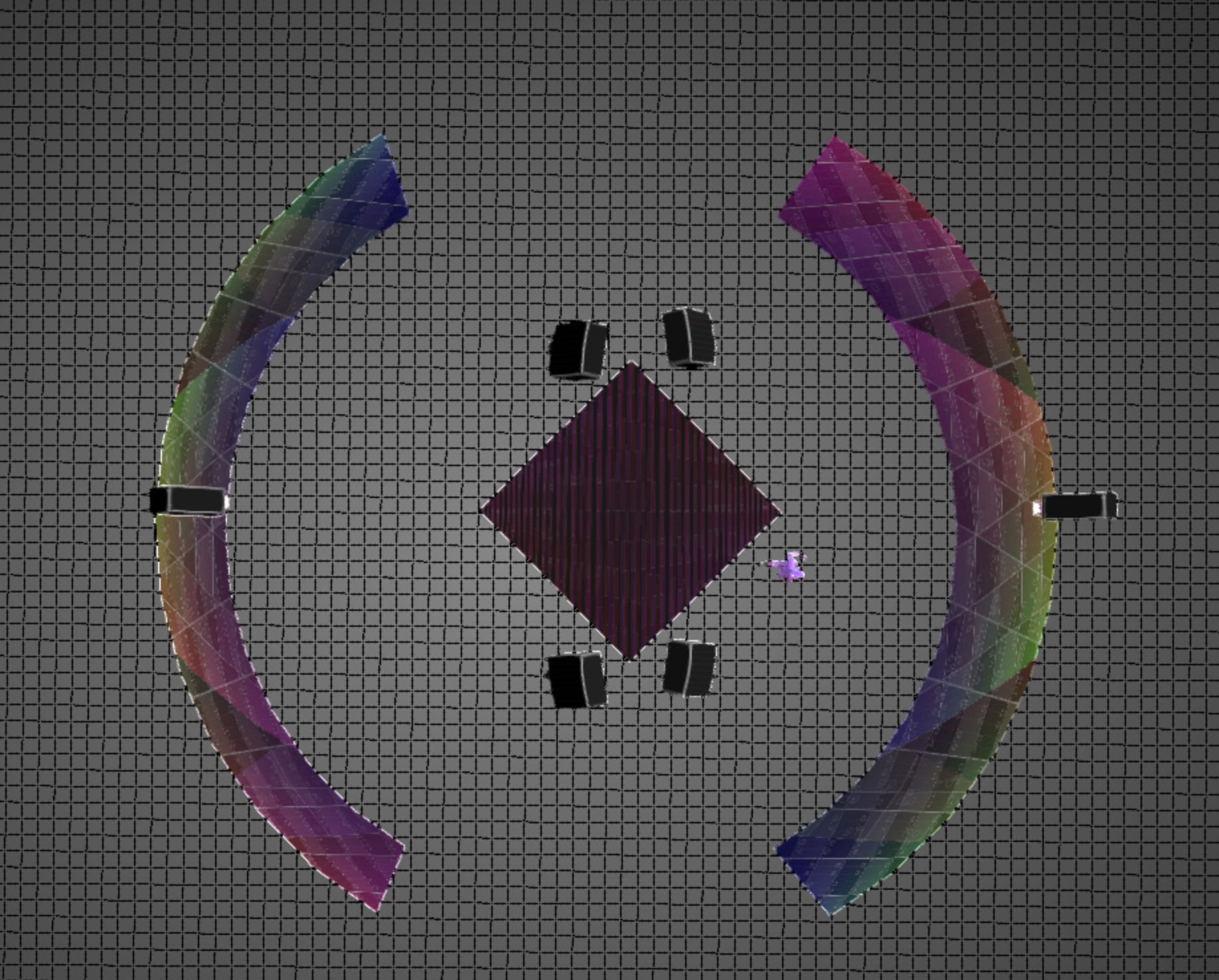


Projectors Placement finalized by Professor Sven Ortel
Narrative Breakdown
Content Creation
Our content pipeline involved Unreal Engine for scene development and animation, Adobe After Effects for post-production edits, and Pixera for media processing, compositing, and final playback integration.
I was responsible for building the crowded club scene in Unreal Engine, where I designed and optimized a densely populated virtual environment, integrated and animated over 50 MetaHuman meshes, ensuring realistic movement and crowd dynamics. I also programmed dynamic lighting effects to enhance the atmosphere, synchronizing animated light fixtures with the scene’s energy.
The finalized assets were then imported into Pixera, where I assisted in media compositing and timeline sequencing for the show.


